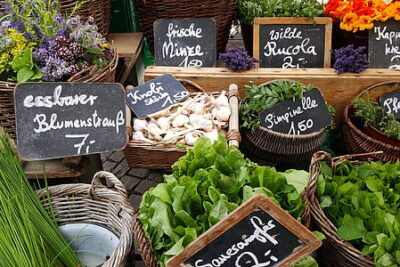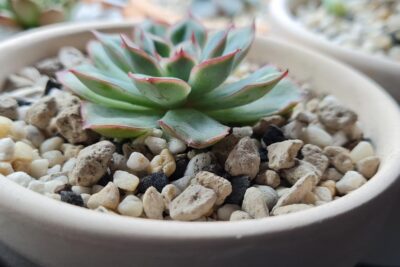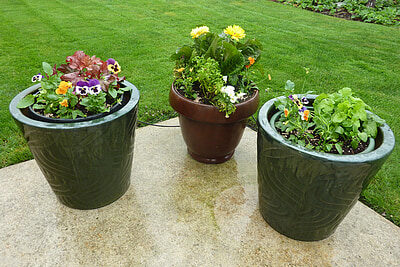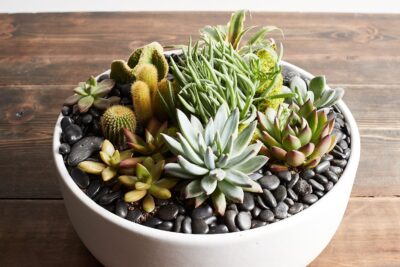
Combining Succulents: Can You Plant Them Alongside Other Plants?

Succulents have become increasingly popular in recent years due to their unique shapes, vibrant colors, and low-maintenance nature. These plants, which store water in their leaves, stems, or roots, are known for their ability to thrive in dry and arid conditions. However, many succulent enthusiasts wonder if these plants can be combined with other types of plants in the same garden or container.
We will explore the possibility of combining succulents with other plants and discuss the potential benefits and challenges of doing so. We will delve into the factors to consider when choosing companion plants for succulents, such as light requirements, watering needs, and growth habits. Additionally, we will provide some practical tips and examples of successful succulent combinations to inspire your own gardening projects. So, if you're curious about whether you can plant succulents alongside other plants, keep reading to find out!
- Yes, you can plant succulents alongside other plants
- Choose plants with similar sunlight and water requirements
- Group succulents together for a visually appealing arrangement
- Consider the growth habits of other plants to avoid overcrowding
- Use well-draining soil to prevent waterlogged roots
- Avoid planting succulents with plants that require frequent watering
- Monitor the soil moisture levels to ensure the succulents are not overwatered
- Be mindful of the size and spread of other plants to give enough space for the succulents to grow
- Prune any plants that may shade the succulents too much
- Regularly check and adjust the watering schedule to meet the needs of all the plants
- Frequently Asked Questions
Yes, you can plant succulents alongside other plants
Succulents are highly versatile plants that can thrive in various environments, including alongside other plants. They not only add a unique and eye-catching aesthetic to any garden or indoor space but also offer several benefits when combined with other plant varieties.
Diverse Plant Combinations
When it comes to combining succulents with other plants, your options are virtually limitless. Succulents come in various shapes, sizes, and colors, allowing you to create stunning and diverse plant combinations.
For instance, you can pair succulents with flowering plants to create a vibrant and visually appealing display of colors. The contrasting textures and forms of succulents can complement the delicate petals and foliage of other plants, resulting in an eye-catching arrangement.
Additionally, you can incorporate succulents into a mixed container garden, alongside herbs, vegetables, or other foliage plants. This not only adds visual interest but also allows you to maximize space and create a functional and attractive display.
 Unveiling the Wealthy Potential of Money Tree Succulents
Unveiling the Wealthy Potential of Money Tree SucculentsBenefits of Combining Succulents with Other Plants
Combining succulents with other plants offers several benefits for both the succulents and the companion plants:
- Water Conservation: Succulents have adapted to store water in their leaves, stems, or roots, making them highly drought-tolerant. When planted alongside other plants, they can help conserve water by reducing the overall irrigation needs of the garden.
- Pest Control: Some succulents, such as agave and aloe vera, have natural pest-repellent properties. By planting them alongside other susceptible plants, you can help deter pests and reduce the need for chemical pesticides.
- Soil Improvement: Succulents are known for their ability to thrive in well-draining soil. When combined with other plants, they can improve soil structure by reducing compaction and enhancing drainage.
- Low Maintenance: Succulents are generally low-maintenance plants, requiring minimal water and care. By incorporating them into your garden alongside other plants, you can create a visually appealing landscape that requires less maintenance and attention.
Tips for Successful Succulent Combinations
While succulents can be successfully combined with other plants, it's essential to consider their individual requirements to ensure their overall health and vitality. Here are some tips for successful succulent combinations:
- Sunlight: Most succulents thrive in full sun or bright, indirect light. Ensure that the companion plants you choose have similar lighting requirements to avoid any issues.
- Watering: Succulents prefer infrequent watering, allowing the soil to dry out between waterings. Make sure the companion plants you select have similar watering needs to avoid overwatering the succulents.
- Drainage: Succulents require well-draining soil to prevent root rot. Ensure that the container or planting area you choose allows excess water to drain away quickly.
- Compatibility: Consider the growth habit and size of the succulents and companion plants to ensure they won't outcompete or overshadow each other. Choose plants with similar growth rates and requirements for a harmonious combination.
Combining succulents with other plants can create stunning and diverse displays while offering various benefits. With proper planning and consideration of each plant's needs, you can create a harmonious and thriving garden or indoor space that showcases the beauty of succulents alongside their companion plants.
Choose plants with similar sunlight and water requirements
When it comes to combining succulents with other plants, it's important to consider their sunlight and water requirements. Succulents are known for their ability to thrive in dry and arid conditions, while other plants may prefer more moisture. To ensure successful coexistence, it's best to select plants that have similar needs.
First, let's talk about sunlight requirements. Succulents typically love bright, indirect light and can tolerate a few hours of direct sunlight each day. When choosing companion plants, opt for those that also thrive in full or partial sun. This will ensure that both the succulents and the other plants receive adequate light for photosynthesis and growth.
Next, let's consider water requirements. Succulents have adapted to store water in their leaves, stems, or roots, allowing them to survive in dry conditions. They prefer infrequent watering and well-draining soil to prevent root rot. On the other hand, some plants require more frequent watering and moist soil. It's crucial to select plants that have similar watering needs to avoid overwatering the succulents or underwatering the other plants.
 Best Succulent Ground Covers: Choosing the Perfect Garden Plants
Best Succulent Ground Covers: Choosing the Perfect Garden PlantsPro Tip: When combining succulents with other plants, it's always a good idea to group them together based on their water requirements. This way, you can easily provide the appropriate amount of water to each group without risking the health of any individual plant.
Additionally, consider the growth habit and size of the companion plants. Succulents often have unique shapes and textures, so it's important to choose plants that won't overshadow or overcrowd them. Opt for plants with a similar growth habit or those that stay relatively compact. This will ensure that each plant has enough space to grow and showcase its distinctive features.
Finally, it's worth mentioning that while succulents can be planted alongside other plants, it's generally recommended to avoid mixing them with plants that require high humidity. Succulents prefer drier environments, and the excess moisture from high humidity plants can cause them to rot or develop fungal diseases.
Examples of succulent companions
Now that we've discussed the importance of selecting plants with similar sunlight and water requirements, let's explore some examples of companion plants that work well with succulents:
- Low-growing herbs like thyme, oregano, or rosemary
- Drought-tolerant flowers such as lavender, yarrow, or sedum
- Grasses like blue fescue or Mexican feather grass
- Drought-resistant perennials like agastache, echinacea, or coreopsis
These are just a few examples, and the possibilities are endless. The key is to research and select plants that have similar needs and will complement the unique characteristics of your succulents.
Group succulents together for a visually appealing arrangement
When it comes to creating visually appealing arrangements, succulents are a popular choice for many plant enthusiasts. Their unique shapes, colors, and textures make them stand out in any garden or indoor space. But what about combining succulents with other plants? Can they coexist harmoniously, or will they compete for resources?
 Hanging Succulents on Walls: Non-Damaging Techniques Guide
Hanging Succulents on Walls: Non-Damaging Techniques GuideThe good news is that succulents can indeed be planted alongside other plants, both indoors and outdoors. However, there are a few factors to consider to ensure the success of this combination.
1. Compatibility
Not all plants have the same care requirements or growth habits. It's essential to choose companion plants that have similar needs in terms of light, water, and soil conditions. Succulents, for example, thrive in well-draining soil and require plenty of sunlight. Therefore, it's best to select plants that have similar preferences to create a balanced environment.
2. Size and Growth Rate
Consider the size and growth rate of both succulents and the companion plants. Succulents, known for their slow growth, can be easily overwhelmed by faster-growing plants. To maintain a visually appealing arrangement, it's important to choose companion plants that won't outgrow or overshadow the succulents over time.
3. Watering Needs
Succulents are drought-tolerant plants that store water in their leaves, stems, or roots. They have adapted to survive in arid environments with minimal watering. On the other hand, many traditional houseplants require more frequent watering. It's crucial to strike a balance and avoid overwatering the succulents when watering the companion plants.
4. Container Gardening
Combining succulents and other plants in a container is a practical way to create a stunning arrangement. This allows you to control the soil conditions and easily separate or rearrange the plants as needed. When selecting a container, ensure it has sufficient drainage holes to prevent waterlogging, which can be detrimental to succulents.
5. Aesthetics and Design
Lastly, consider the overall aesthetics and design of the arrangement. Choose plants with contrasting colors, shapes, and textures to create an eye-catching display. Succulents, with their unique forms and vibrant hues, can serve as focal points or accents when combined with other plants.
Combining succulents with other plants can result in a visually appealing arrangement. By considering factors such as compatibility, size, watering needs, container gardening, and aesthetics, you can create a harmonious and thriving display that showcases the beauty of succulents alongside other plants.
 Surprise Mom with Stunning Succulents: The Perfect Mother's Day Gift
Surprise Mom with Stunning Succulents: The Perfect Mother's Day GiftConsider the growth habits of other plants to avoid overcrowding
When it comes to combining succulents with other plants in your garden, it's important to consider the growth habits of both types of plants to avoid overcrowding.
Succulents, known for their ability to store water in their leaves and stems, have unique growth patterns that differ from many other plants. They typically have a more compact and slow-growing nature, making them ideal for smaller spaces or container gardens.
When choosing companion plants for your succulents, it's essential to select ones that have similar growth habits. This ensures that both plants can thrive without one overpowering the other or competing for resources.
Planting alongside other succulents
- When planting succulents alongside other succulents, consider their size and growth rate.
- Pairing succulents with similar growth habits will create a visually appealing and harmonious arrangement.
- Avoid planting fast-growing succulents with slow-growing ones, as this may result in overcrowding and limited space for each plant to grow.
- Choose succulents that have similar water and sunlight requirements to ensure they can thrive together in the same environment.
Planting alongside non-succulent plants
- Before planting succulents alongside non-succulent plants, consider the latter's growth habits and requirements.
- Choose non-succulent plants that have similar water and sunlight needs to create a harmonious environment.
- Ensure there is enough space between the succulents and non-succulent plants to prevent overcrowding and allow for proper growth.
- Avoid planting aggressive or fast-growing plants alongside succulents, as they may overshadow or outcompete the succulents for resources.
- Consider using containers or raised beds to separate succulents from non-succulent plants, providing more control over their growth and preventing potential issues.
Conclusion: Combining succulents with other plants can create stunning and diverse garden arrangements. By considering the growth habits and requirements of both succulents and companion plants, you can ensure a harmonious and thriving garden space.
Use well-draining soil to prevent waterlogged roots
When it comes to combining succulents with other plants, one of the most important factors to consider is the type of soil you use. Succulents thrive in well-draining soil that prevents waterlogged roots. This is because succulents are adapted to survive in arid environments where water is scarce.
To create the ideal growing conditions for your succulents, use a mix of sandy soil, perlite, and peat moss. This combination allows for proper drainage and prevents excess moisture from accumulating around the roots. Avoid using regular garden soil, as it tends to retain water and can lead to root rot in succulents.
 Sending Succulents: The Perfect Gift for Plant Lovers
Sending Succulents: The Perfect Gift for Plant LoversTip: You can make your own well-draining soil mix by combining equal parts of sandy soil, perlite, and peat moss. This will ensure that your succulents have the perfect environment to thrive.
Avoid planting succulents with plants that require frequent watering
When it comes to combining succulents with other plants, it's important to consider their unique watering needs. Succulents are known for their ability to store water in their leaves, stems, and roots, allowing them to withstand dry conditions. On the other hand, many other plants require more frequent watering to thrive.
Therefore, it's generally advisable to avoid planting succulents alongside plants that require frequent watering. Overwatering can lead to root rot and other moisture-related issues for succulents, which prefer well-draining soil and drier conditions.
However, this doesn't mean that you can't create beautiful combinations with succulents and other plants. By choosing plants with similar water requirements, you can create visually appealing and harmonious arrangements.
What plants can be combined with succulents?
When selecting companion plants for your succulents, look for those that prefer similar watering schedules and have compatible growth habits. Here are some suggestions:
- Agave: Agave plants are succulents themselves and make excellent companions for other succulents. They have similar water needs and come in a variety of sizes and colors, adding depth and texture to your arrangement.
- Echeveria: These rosette-shaped succulents pair well with other low-water plants, such as sedums or drought-tolerant grasses. Their diverse range of colors and textures can create a visually striking combination.
- Yucca: Yucca plants are also succulents and can be combined with other succulents or drought-tolerant plants. They add height and architectural interest to any arrangement.
Remember to consider the light requirements of both succulents and companion plants when creating your combination. Most succulents thrive in bright, indirect light, so choose plants that can tolerate similar lighting conditions.
 Find the Best East Side Succulent Shops for All Your Plant Needs!
Find the Best East Side Succulent Shops for All Your Plant Needs!Overall, while it's important to be mindful of the watering needs of succulents, you can still create stunning combinations by selecting companion plants that have similar water requirements and complement the overall aesthetic you want to achieve.
Monitor the soil moisture levels to ensure the succulents are not overwatered
One of the most important factors to consider when combining succulents with other plants is the water requirements. Succulents are known for their ability to store water in their leaves, stems, and roots. This allows them to survive in arid conditions and makes them highly susceptible to overwatering.
When planting succulents alongside other plants, it is crucial to monitor the soil moisture levels. Succulents prefer well-draining soil that allows excess water to quickly flow away. If the soil becomes waterlogged, the roots of succulents can rot, leading to their demise.
Use a moisture meter or simply stick your finger into the soil to check its moisture content. If the soil feels damp or wet, hold off on watering until it dries out. Succulents thrive in dry conditions and can tolerate periods of drought, so it's better to underwater than to overwater.
In addition to monitoring the soil moisture levels, it's also essential to avoid planting succulents in containers or garden beds with plants that require frequent watering. Opt for plants that have similar water needs or consider grouping succulents together in a separate container or designated succulent garden.
Key Takeaway: Keep a close eye on the soil moisture levels when combining succulents with other plants. Ensure the soil is well-draining and avoid overwatering to prevent root rot and promote healthy succulent growth.
 Discover the Best Online Shops for Succulents in a Box
Discover the Best Online Shops for Succulents in a BoxBe mindful of the size and spread of other plants to give enough space for the succulents to grow
When it comes to combining succulents with other plants, it's important to consider the size and spread of the surrounding plants. Succulents, known for their ability to store water in their leaves and stems, have unique growth habits that may require some extra space.
Succulents typically have a more compact growth pattern compared to other plants. Their leaves are often thick and fleshy, allowing them to store water for longer periods. However, this compact growth habit means that they need adequate space to spread out and thrive.
1. Consider the height and width of neighboring plants:
When choosing plants to pair with succulents, it's crucial to consider their height and width. Taller plants may overshadow the succulents, depriving them of the much-needed sunlight. Similarly, plants with spreading habits may encroach on the succulents' growing space.
Ensure that the neighboring plants have similar growth requirements or can tolerate the dry conditions that succulents thrive in. This will help prevent overcrowding and competition for resources.
2. Provide ample spacing:
 Getting Started with DIY Succulent Planting: Getting Dirty!
Getting Started with DIY Succulent Planting: Getting Dirty!Give your succulents enough room to grow by providing ample spacing between them and other plants. This not only allows the succulents to spread out their roots but also helps in preventing the spread of diseases or pests.
Spacing requirements may vary depending on the specific succulent species. Some succulents, like aloe vera or agave, can have a larger spread, while others, like Echeveria or Haworthia, have a more compact growth habit.
3. Opt for containers or raised beds:
If you're concerned about overcrowding or competition from other plants, consider planting your succulents in containers or raised beds. This allows you to control the growing environment and ensure that the succulents have sufficient space to thrive.
Containers and raised beds also enable you to create visually appealing arrangements by combining different succulent varieties and textures.
4. Regular maintenance and monitoring:
Once you've combined succulents with other plants, regular maintenance and monitoring are essential. Keep an eye on the growth patterns of the surrounding plants and make adjustments if needed.
 Top-Rated Long Succulent Planters: Discover the Best Deals
Top-Rated Long Succulent Planters: Discover the Best DealsTrim back any plants that may be encroaching on the succulents' space and monitor for signs of overcrowding or competition. If you notice any issues, such as poor growth or wilting, consider providing additional spacing or relocating the plants if necessary.
Conclusion:
Combining succulents with other plants can create beautiful and diverse garden arrangements. However, it's essential to be mindful of the size and spread of neighboring plants to give enough space for the succulents to grow and thrive. By considering the height, width, and growth requirements of other plants, providing ample spacing, and opting for containers or raised beds if necessary, you can create a harmonious and visually appealing succulent garden.
Prune any plants that may shade the succulents too much
If you're considering combining succulents with other plants in your garden or indoor space, it's important to take into account the amount of sunlight they require. Succulents thrive in bright, direct light and can struggle if they are shaded too much by surrounding plants.
When planning your succulent garden, make sure to prune any plants that may cast excessive shade on your succulents. This will help ensure that your succulents receive the optimal amount of sunlight they need to grow and thrive.
Additionally, consider the growth habits of the plants you want to combine with your succulents. Some plants may grow tall and overshadow the succulents, limiting their access to sunlight. In such cases, it's best to either choose plants that have similar light requirements or position the taller plants in a way that doesn't create too much shade for the succulents.
 Where to Find Succulents for Sale in San Diego: Your Ultimate Guide
Where to Find Succulents for Sale in San Diego: Your Ultimate GuideRemember, succulents are adapted to arid environments and are accustomed to receiving ample sunlight. By pruning shade-casting plants and carefully selecting compatible plant companions, you can create a visually appealing and thriving combination of succulents and other plants in your garden.
Regularly check and adjust the watering schedule to meet the needs of all the plants
When it comes to combining succulents with other plants, one crucial factor to consider is their watering requirements. Succulents are known for their ability to store water in their leaves and stems, allowing them to survive in arid conditions. On the other hand, most other plants have higher water needs and may not thrive in dry, well-draining soil.
Therefore, it is essential to regularly check and adjust the watering schedule to strike a balance that meets the needs of all the plants in your garden. Overwatering can lead to root rot, which is detrimental to succulents, while underwatering can cause other plants to wither and die.
To ensure you are providing the right amount of water, consider the following:
- Observe the soil moisture: Succulents prefer soil that dries out between watering, while other plants may need consistently moist soil. Check the moisture level by inserting your finger into the soil to a depth of about an inch. If it feels dry, it's time to water.
- Water separately if necessary: If your succulents are planted alongside plants with higher water needs, you may need to water them separately. Use a watering can or hose with a nozzle to ensure you are only watering the plants that need it.
- Consider the climate: The climate in your region plays a significant role in determining watering needs. If you live in an area with hot and dry summers, you may need to water more frequently. Adjust your watering schedule accordingly to accommodate all the plants.
- Use well-draining soil: Succulents thrive in soil that drains well to prevent waterlogged roots. Ensure the soil you use for your mixed planting has good drainage properties to avoid water retention that could harm the succulents.
By regularly checking the soil moisture, watering separately when needed, considering the climate, and using well-draining soil, you can successfully combine succulents with other plants while satisfying their different watering requirements.
Frequently Asked Questions
1. Can succulents be planted alongside other plants?
Yes, succulents can be planted alongside other plants, as long as their care requirements are similar.
2. Do succulents need special soil when planted with other plants?
Succulents prefer well-draining soil, so it's advisable to use a mix specifically formulated for succulents when planting them alongside other plants.
3. Can succulents and non-succulent plants be planted together in the same container?
Yes, succulents and non-succulent plants can be planted together in the same container, as long as the container has good drainage and the plants have similar watering needs.
4. Are there any plants that should not be planted with succulents?
Succulents generally do well when planted with other plants, but it's best to avoid planting them with plants that require frequent watering or have different light requirements.
If you want to read more articles similar to Combining Succulents: Can You Plant Them Alongside Other Plants?, you can visit the Planters and Arrangements category.






You Must Read